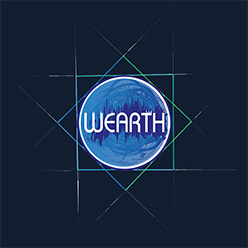Newsletter 1 - Genesis I
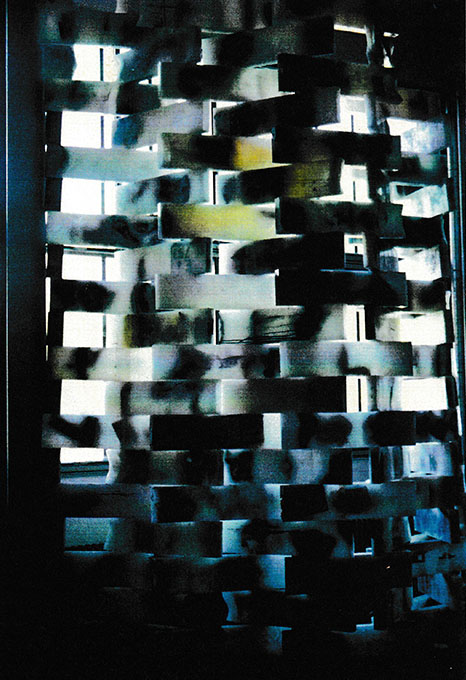
“Macrosoft” installation
This is the first newsletter in a new format, since Twitter decided not only to buy the Dutch “Get Revue” newsletter tool but to shut it down completely, destroying all the data, contacts etc. Hopefully, we will be able to get you more reliably informed about updates within the project, and you still saw the last issue on the Taiwan placements…. This “new” first issue is dedicated to the Genesis of WEARTH.
Various moments of inspiration are to be mentioned first, which I present chronologically in order to associate as little weight with them as possible. For I am not able to say whether any of them is more important than others, or a key experience that causally led directly to the making of the sculpture. On the whole, there were several influences. The first was certainly the profession of my father (and of the forefathers who practised architecture and metaphysical architecture), Konrad-Ben Koethner. As a garden and landscape architect, his design work was primarily in and with nature, a bridge between human-designed spaces and wild nature, necessarily taking both into account. But there is also a Celtic (German) romantic vein in me that fills(s) my soul every time I spend time in nature, in the forest as a magical spatial experience: whether it was studying nature while drawing or through ephemeral “wood arrangements” in the forest, the closeness to nature connected me with my ancestors, the wilderness itself, as well as enabling the perception of Mother Earth.
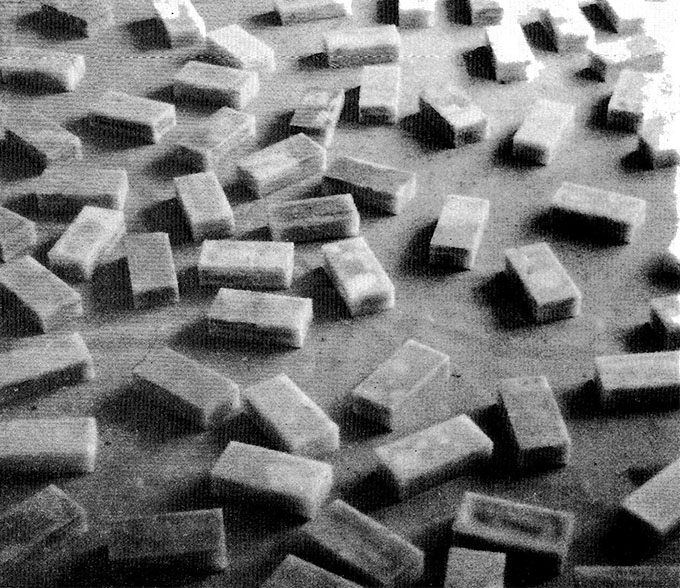
Bricks in the first format
When I visited Joseph Beuys’ FIU at the Düsseldorf Art Academy in my free time as a 14-year-old high school student, I was particularly impressed by the fact that he was concerned with art that had a social impact and consciously wanted to play in all spaces.
Hubert Schaffmeister was not only a panel painter but also produced works of glass painting, that is, those works of painting whose colours are probably the most luminous, which do not only work with surface light. The translucent paraffin wax, which is our starting material, works with light in a similar way, potentially translucent but never transparent.
It was at an art student party in Schöneberg in the 1980s that I noticed an open glass brick: someone had put their old brushes in it. Even though I was saddened by the information of the recent suicide of the creator of this arrangement, it was here that the idea of transparent inclusion first appeared.
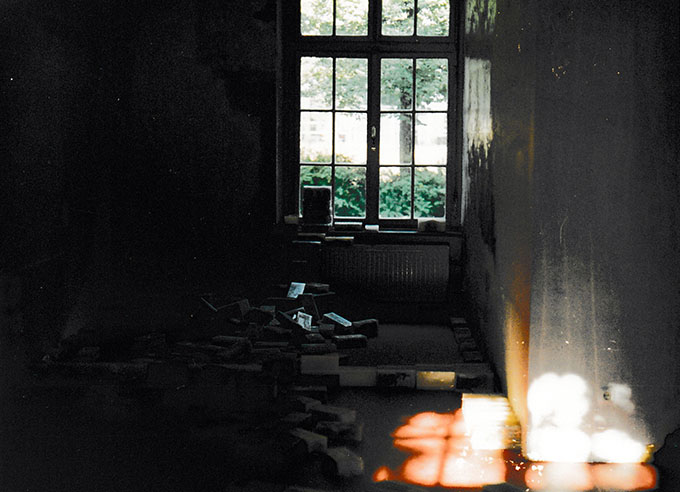
WWB @ NEUER TANZ
The Gombitza Sisters was an association of artists, choreographers, dancers, architects, philosophers, composers and musicians, founded by myself and some friends, who realised cross-over projects without a drawer. At that time, this not only overtaxed the audience, but collective creation was less important to most of them than their individual careers. Although I am pleased that this worked out quite well with Katharina Grosse, for example, other structures had to be found that made a joint creative activity possible and effective versus one that was only committed to oneself: Gombitza Sisters did not work out in the long run. Nevertheless, the first series of encaustic wax blocks, installations, exhibitions and performances with them were created during this phase. Photographs from the Galerie Kosmos, the Folkwang Hochschule, Bühne Wuppertal, some installations and the “Mural” concept are to be seen in the included photos.
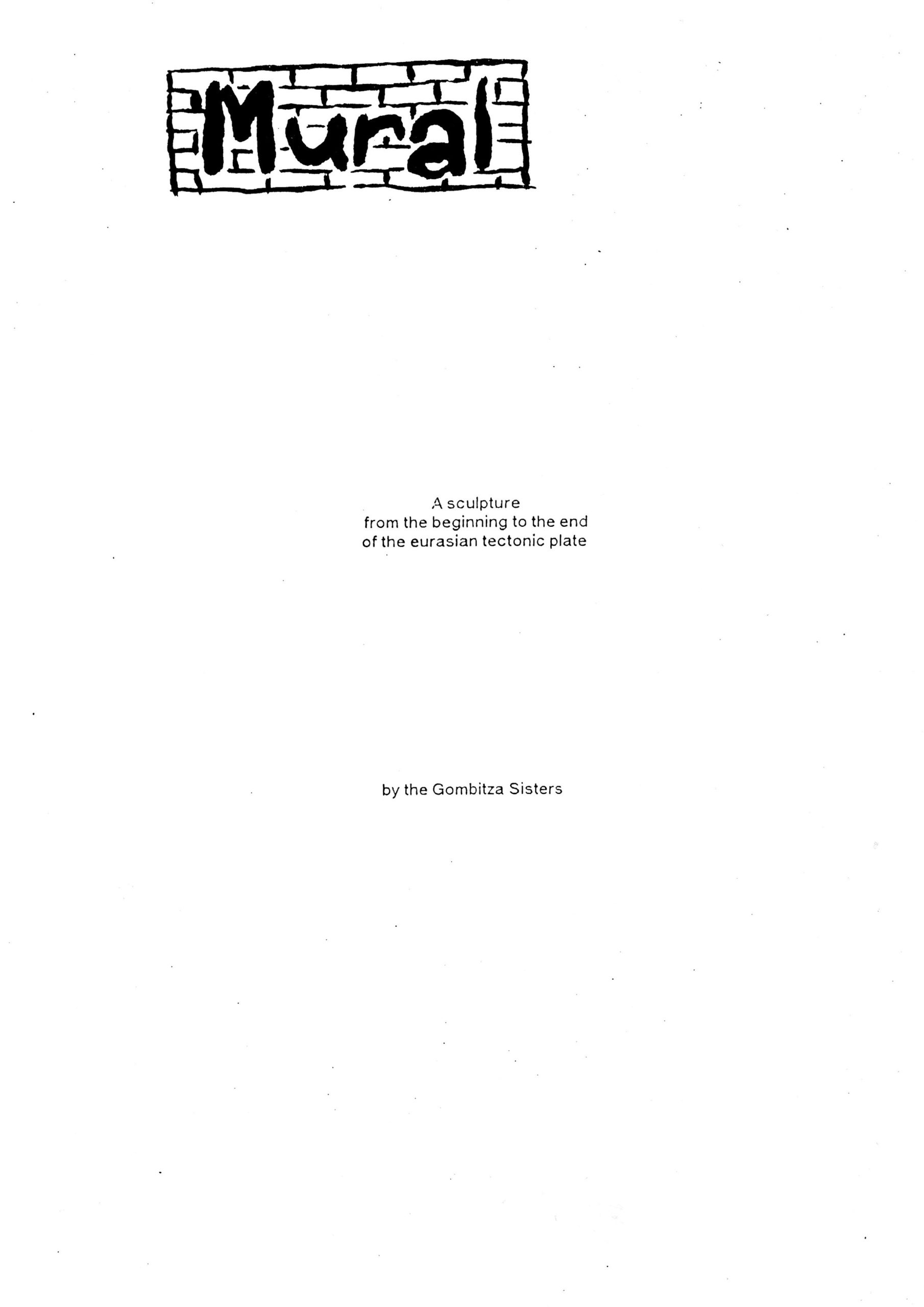
The title page of Gombitza Sisters MURAL concept
What I then experienced at Studio Babelsberg after reunification was the industrial dimension of audiovisual creation. As the person responsible for art in the management, I learned to supervise large international productions. After the film “The Pianist” by Roman Polanski, which I brought to Babelsberg, I wanted to take care of my own projects and went to Los Angeles, which I already knew from regular visits to California and Mexico.
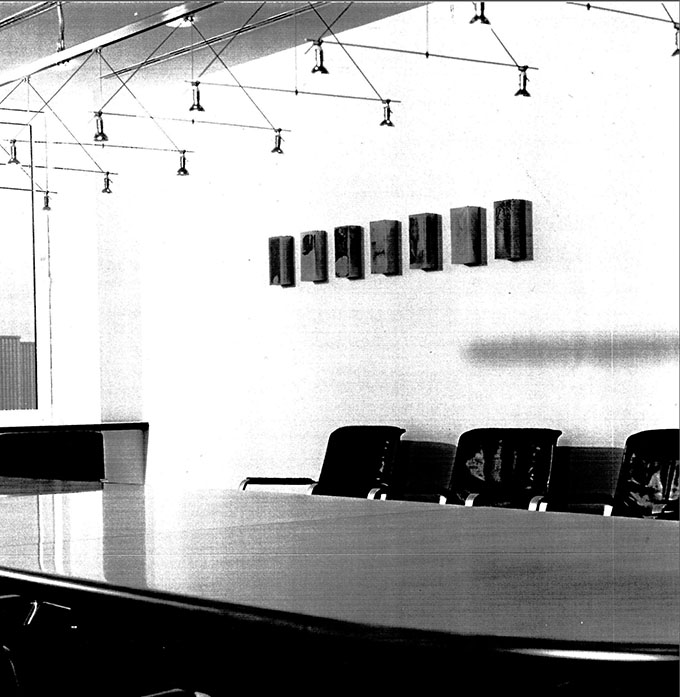
The bridge of Arnhem
The proximity to Mexico seemed to me to be one of the main advantages of Los Angeles, as I was very interested in and studied the indigenous culture of the Americas. Of that, there was much more to discover in Mexico than in the United States. One of these trips to Mexico in the 1990s took me to the Sonora desert with my cumpadre Stefan Linde and a wax stone. It was there that the first ever Land Art placement took place. At that time, the project was called “deposito” and wanted to take into account the fact that the brick was “laid down” (deponer algo) and that rubbish “stored” in stone was upcycled before the word became fashionable. The Zócalo of a small indigenous village there was nowhere near the scale of its famous cousin in the capital, but nevertheless the heart of the place. How absurd to discover an Alexander von Humboldt stele on that Zócalo in this poor settlement, which was very difficult to access and in the scorching heat! With some effort, we found an elderly gentleman who spoke a little Spanish in addition to the Nahuatl customary there: to my “¿Por qué él, por qué aquí?” I received the following reply: “Fue el primer europeo en preguntar.” This moment of listening, this quality of listening, quite different from the usual European proselytising, made Alexander von Humboldt far more to me than that famous figure of the general educational canon. The word “ear” in WEARTH takes this basis of the 1st Anthology of Human Values into account.
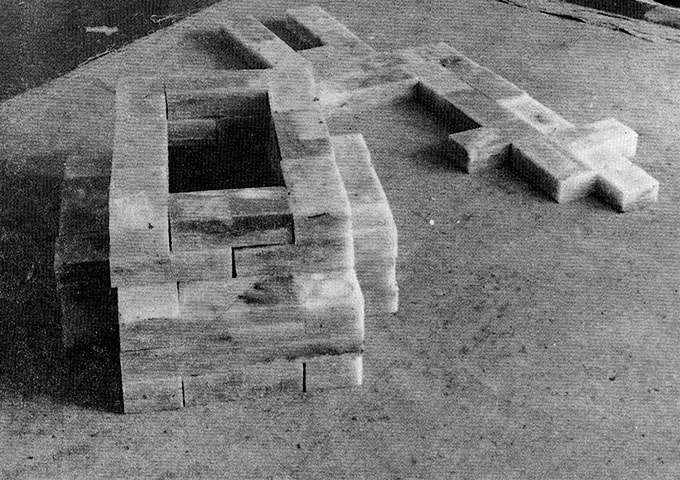
Recording our values
In the following years, many prototypical placements and the development of the very own WEARTH waxstone format took place.
The basis for this are measurement standards of relation as found in Leonardo da Vinci and the tradition of Feng Shui.
The first continuous placement series of the new measure took place in 2017. The route took us from the capital of diamonds, Antwerp, along the North Sea and Baltic coast to the Kaliningrad oblast in Russia. Since 2019, continuous work has been done on the (further) development of the protocol so that now a first elaborated and implemented variant (https://www.wearth.eu/protocol-placements/) is available.
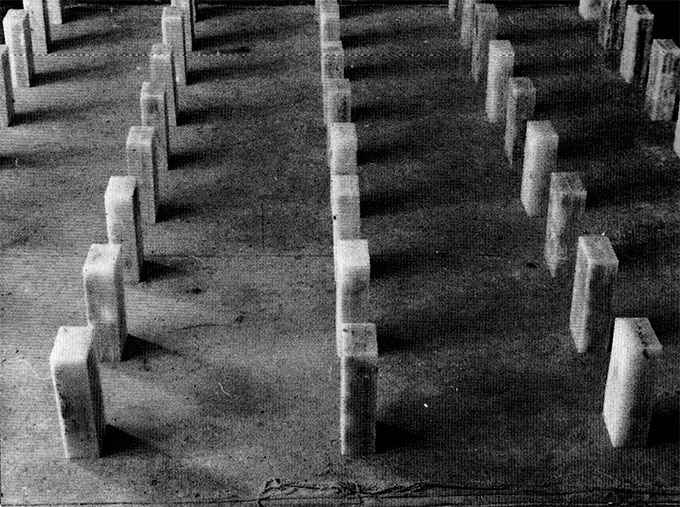
A series of WWB in the old format
On the pilot route, the activity of natural placements, interviews and the associated physical movement proved to be an insight machine. For example, that realisation of metaphysical gravitation was manifested here, which was later spontaneously confirmed independently by the Russian Academy of Sciences and the Philosophy Department of New York University.
On this basis, too, it can and must be said that there were and are many creations in the main stream of Eurasian culture since the Celts that exert(ed) their reciprocal influence in WEARTH. To name only the most important others not directly from my Düsseldorf Academy lineage: Johann Sebastian Bach, Caspar David Friedrich, Hilma af Klint, Pina Bausch, Andy Goldsworthy, Lucio Fontana, Sigmar Polke, Werner Heisenberg, Prabhat Ranjan Sharkar as well as the US artists Buckminster Fuller, Jackson Pollock, Donald Judd, Walter de Maria, and their indigenous predecessors from ancient Mexico, the Toltecs. Probably, others will follow, or are already co-creating without me being conscious about it.

A series of WWB in the old format
In a second text completing this Genesis text, I will describe the interdependence between my paintings and WEARTH as well as its relation with my main painting professors, Markus Lüpertz and Jörg Immendorff.
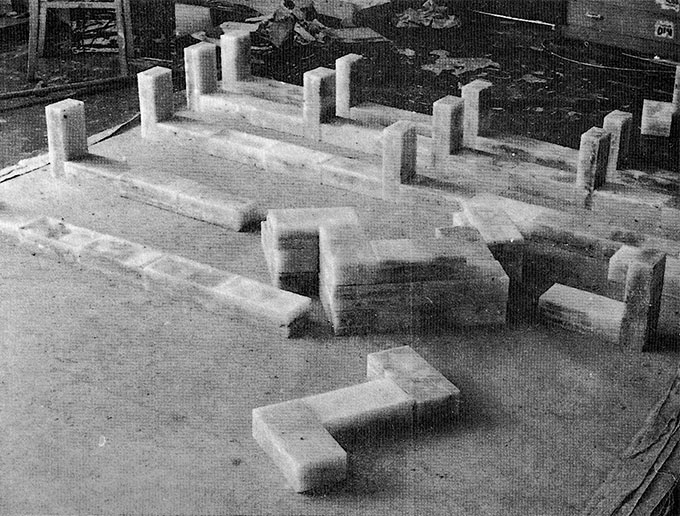
Relations between spatial bodies
Please send me an email to jkk@wearth.eu if you want to subscribe or unsubscribe to our newsletter sendings.
And here is the link to the next newsletter: https://www.wearth.eu/newsletter1/newsletter-2/
